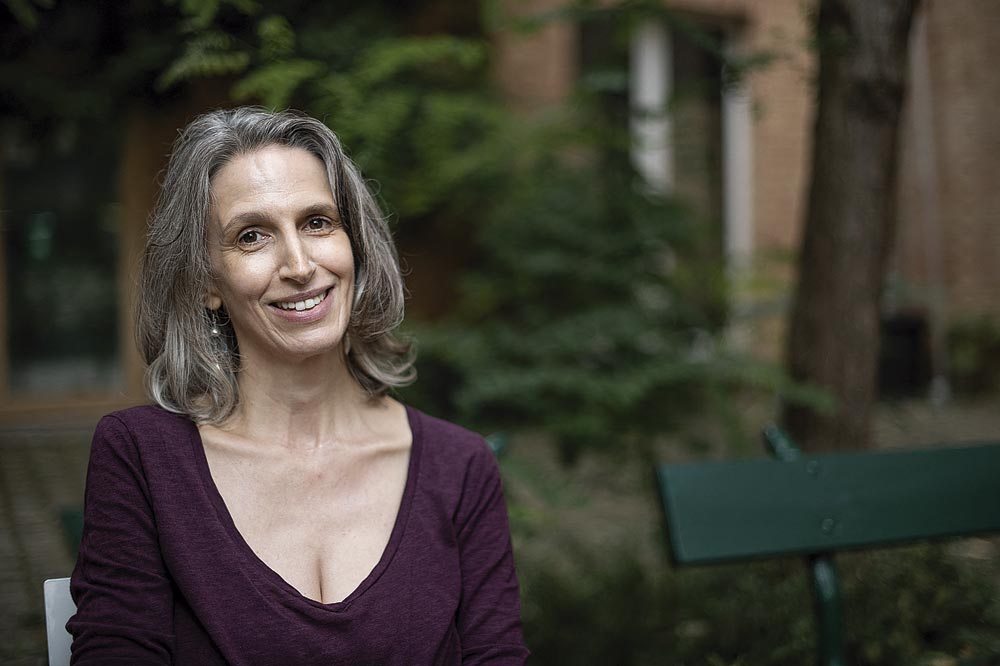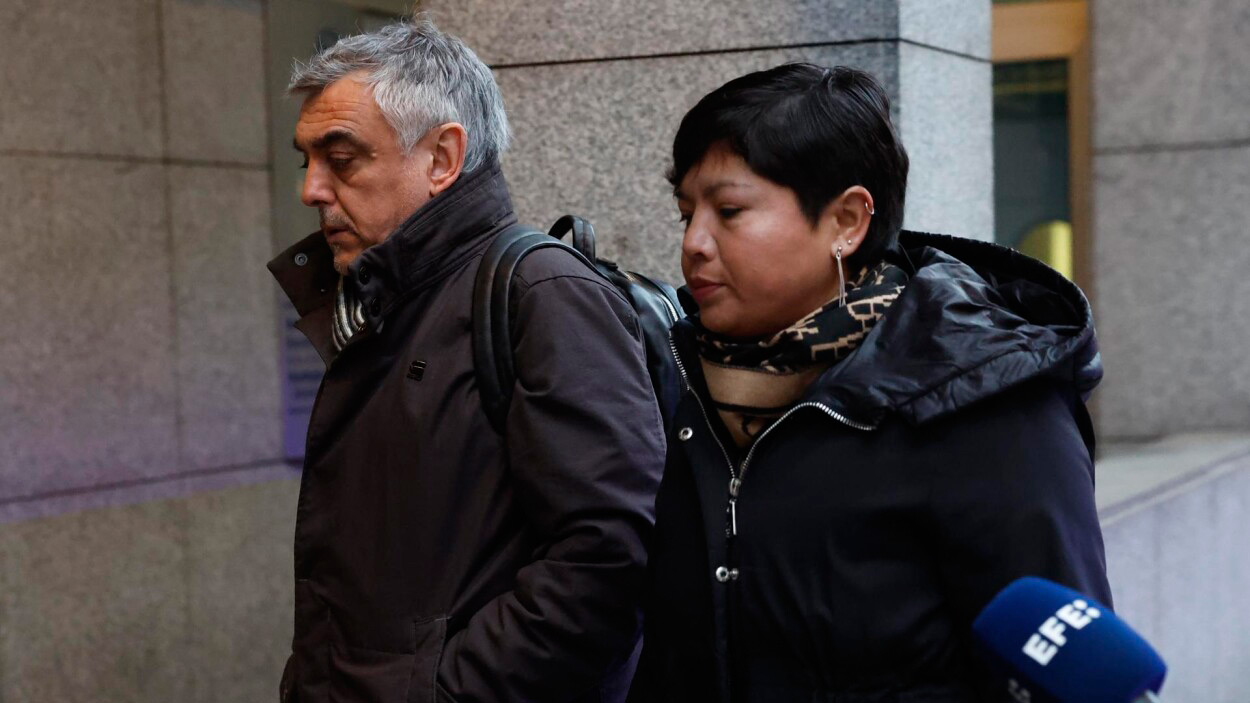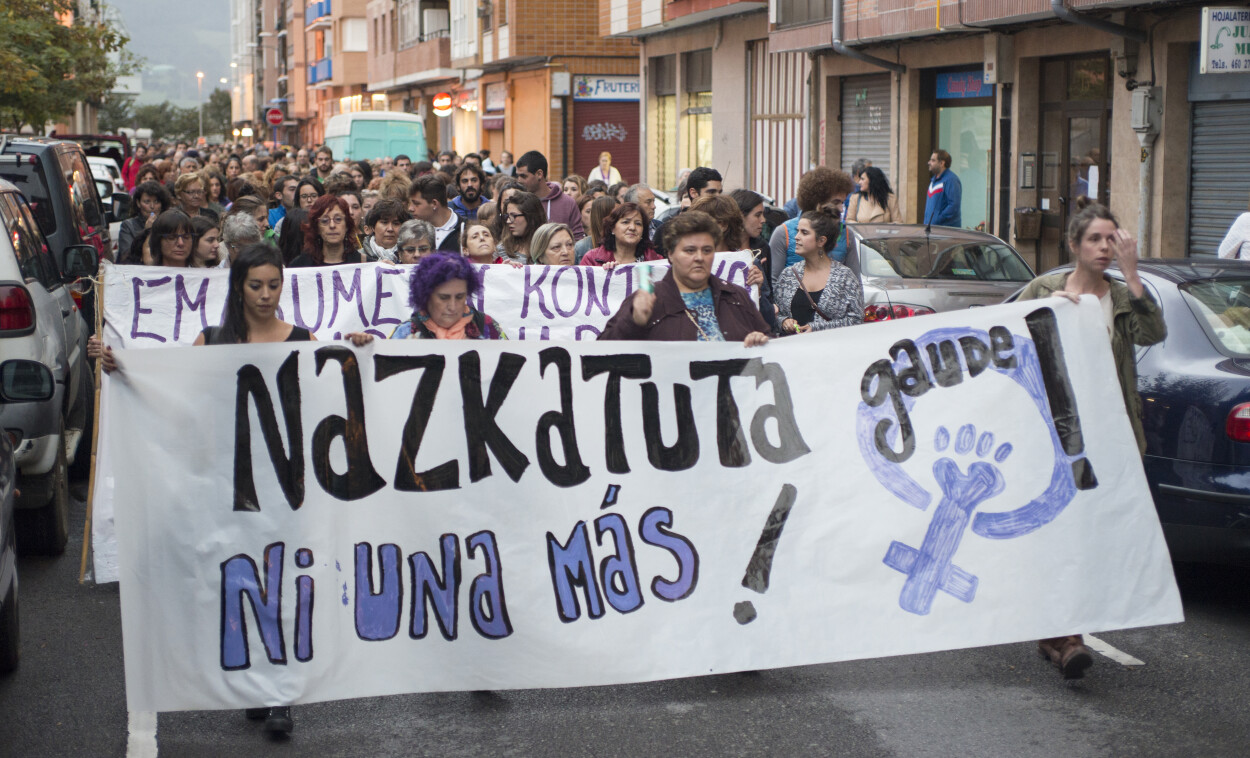"It's impossible not to ever find yourself in the role of the witch"
- Mona Chollet (Geneva, Switzerland, 1973) is a writer and journalist of Le Monde Diplomatique, founded in 1974 in Berlin. Her latest work has been on sale in France since September: Sorcières – La Puissance invaincue des femmes (Bruges – The undefeated force of women). The patriarchal heritage of the time of witch hunt in Europe has come to this day. He asks a question: Why are independent women, older people and those without children questioned?The media Revue Ballast has published an interview with Chollet after publishing a video. We have brought part of it to ARGIA thanks to the mediation of El Salto.

With the title, his book only speaks a little bit of witches. The witch, more than anything, looks like an image that helps to imagine all kinds of stigmatized women.
I'm not a historian, and I couldn't try to make the story of witch hunt. I have read works by historians, both women and men, but, in fact, I was interested in discovering the kind of women they pursued at that time (which we can then unpack): single, widowed, women who controlled their reproduction, elderly women.
Stigmatized by this type of women, they reformulated how all women should be. Through witch hunting, all types of conduct were prohibited and extreme violence was used for oppression. The consequences of these hunting affected all women in society: beyond investigations and torture, women suffered a constant threat, a sort of mandate to comply with the rules.
When it comes to imagining what is acceptable and what is not in a woman, I believe that all this had a strong disciplinary effect. First, the prohibition was applied with violence and repression, and later, from the nineteenth century on, with a certain dose of halago. The education of women took another direction, using moral and medical justifications. It was a way to continue more smoothly the educational process initiated in a very violent way through witch hunting.
Outline three types of persecutable “witches”: independent women, women without children and old women. Could we include women who are not in the household as an independent woman? The witch transforms objects that bind to the area of the house, such as broom.
Yes. To put it in some way, my Chez soi. Une odyssée de l’espace domestique (At home. Odyssey of private space) is a continuation. It is the time when witch hunting women were expelled from many professions, they were assigned a maternal role and a domestic space. The independence of women and their participation in social life are poorly seen.
“Stigmatized single women, widows, women who controlled reproduction and the elderly, reformulated how all women should be”
He's written an entire section chief thinking about not being a child. It's the famous theme of the feminist movement, "The child if I want, when I want," and you've only looked at the first part of the motto. Do you think you have attacked a taboo?
There is a lack of reflection on the subject. There is often a representation of evil women who reject motherhood and who encourage resentment of motherhood. In fact, feminist texts talk little about motherhood. The absence of children is not a claim that has been supported so much.
The individual attitudes that have led to the conflict can be found: American feminist Erika Jong has reported that she read a poem from her in a feminist assembly, in which she has actively participated. The poem talked about the importance of motherhood in his life, and in the assembly the public silenced him. These women were furious for having heard their accustomed speech, but they were quite ugly. The experiences of each one must be respected, a desire that can be there or cannot be there. Both options must be respected. However, I thought it important to develop an underdeveloped discourse in general: the decision not to have children.
We are told that we bring a child into the bowels, that we should not hesitate. However, we have guts and we don't want children. This speech puts aside social pressure, the pressure is covered under what they call instinct. In our society we can decide whether we have children or not... but under the condition of being. We can ask ourselves why there's such social censorship, why it's a natural choice where having children first comes, and at the same time the earth is overpopulated, the future of the planet is afraid to look on one side or the other. The answers given to women who do not want to have children show the extent to which women represent the unique essence. A woman who does not want to have children will hear: “Oh, but you should think about women who want and can’t.” What's the relationship? To say this is to consider women as beings that can be exchanged more or less.
“We are all going to age, but in our society women cannot age
well”
You’ve talked about how society builds desires, but also the ghosts surrounding the “biological clock.”
This goes through the stigmatization of older women and women without children. Through the idea of the biological clock, women are likely to be subjected to excessive pressure: we constantly repeat to them that they have to be mothers, that they have to be agile, that if not, it is impossible, that they lose their destiny.
Are social pressures exerted in all women, despite social classes?
In general, yes. As it could not be otherwise, women in the upper classes have the means to feed themselves well, to maintain good health, to take care of them. Showing a young and healthy body is often a very strong social characteristic. But that also generates great social pressure. In general, I think it is women of all social classes who feel this kind of command.
You have talked about women in general, others, like the British writer Redfern Barrett, focus on the queer witch.
I think it's a matter for all women. It's very easy to be a witch. In society the path is so narrow when you want to be an acceptable woman (is it possible? ): it is impossible not ever to be found in the role of the witch. For the rest, we are forced and united beings, who have nothing natural. Perhaps older women are the ones who have the most to deal with this categorization. We're all going to age, but in our society, women can't age well.
Zer esango zenieke sorgin ehiza gertakizun historiko nagusitzat hartzerik ez dagoela diotenei, hala hartzeko biktima nahikoa ez dagoela argudiatuta?
Europan 50.000 eta 100.000 biktima artean egon zirela kalkulatzen da. Alabaina, zifra zalantzagarria da, eta ez dira kontuan hartzen hil ez zituztenak baina bai lintxatu, erbesteratu eta bere buruaz beste egin zutenak. Ez dut uste hildako kopuruak zehazten duenik gertakariaren garrantzia. Torturen eredugarritasuna biktima zuzenez askoz harago heldu zen. Eredugarritasun horrek gizarte osoari eragin zion iruditeria moldeatu zuen, eremu geografiko zabalean, aldi luze batez.
Bi erizainetatik batek lanean eraso sexistak jasaten dituela azalerazi du Erizainen Ordenak joan den urte bukaeran egin ikerketak. 21.000 erizainek ihardetsi dute, sektore pribatu, publiko eta liberaletik. Hauetan 2.500 gizonak dira.
Today, the voices of women and children remain within a culture that delegitimizes their voices, silencing their experiences, within a system aimed at minimizing or ignoring their basic rights and needs. A media example of this problem is the case of Juana Rivas, but her story... [+]


















.jpg)



